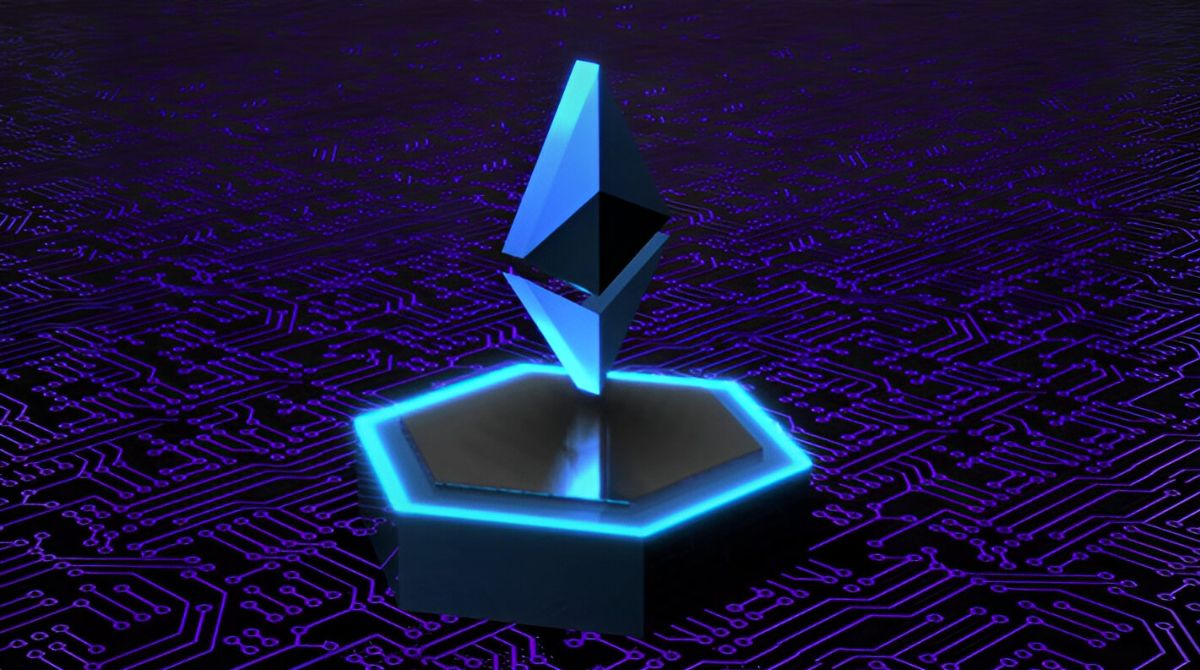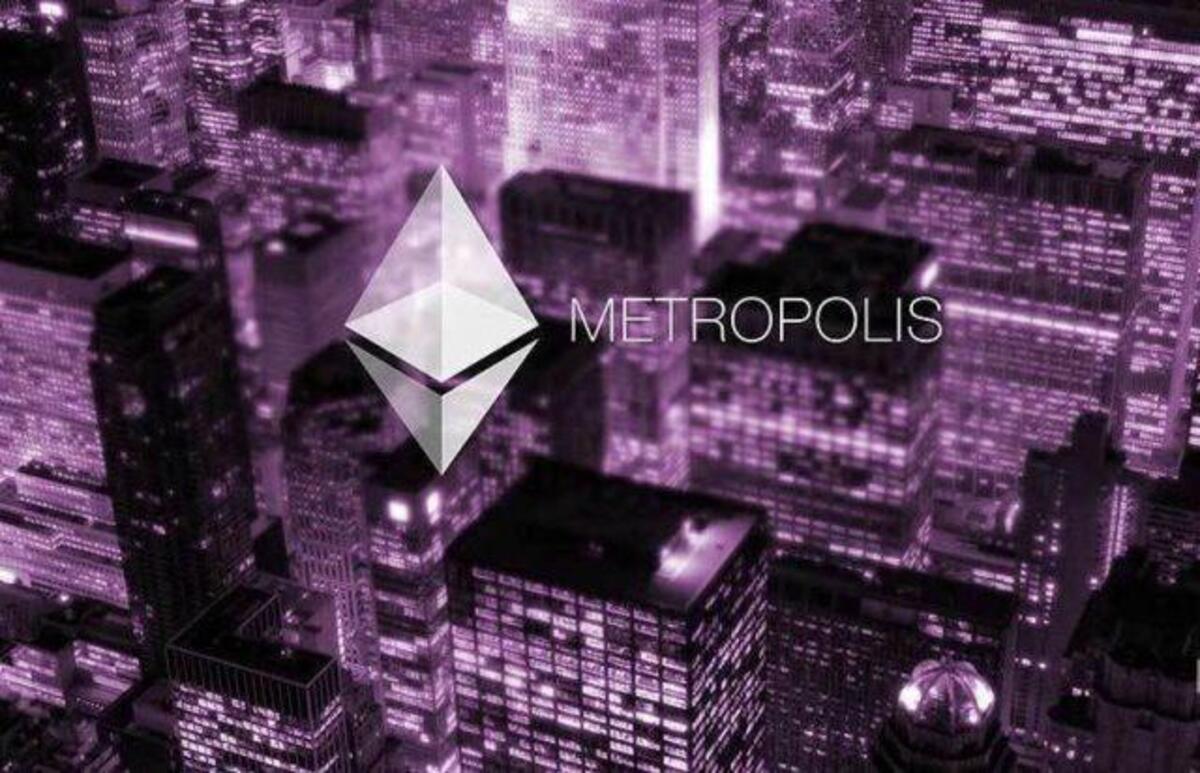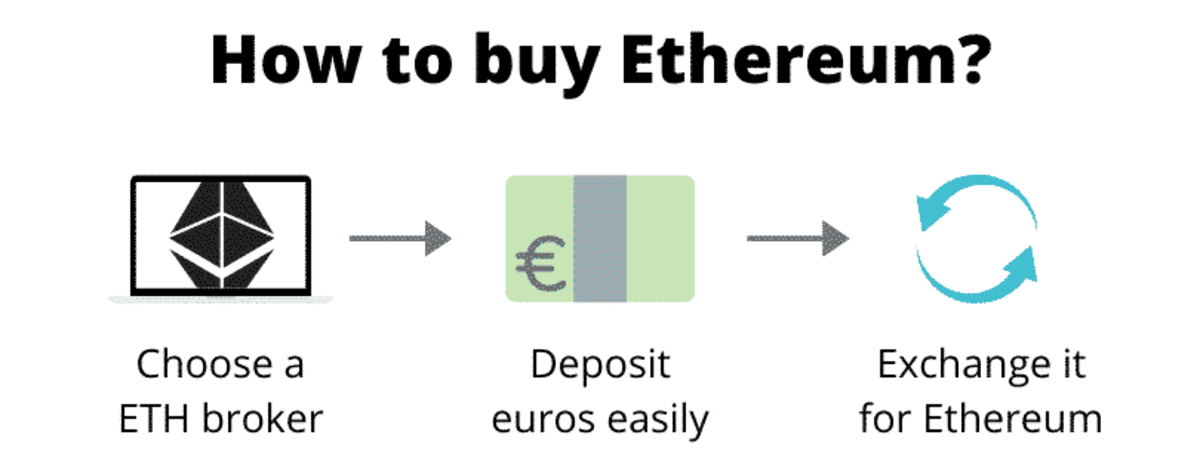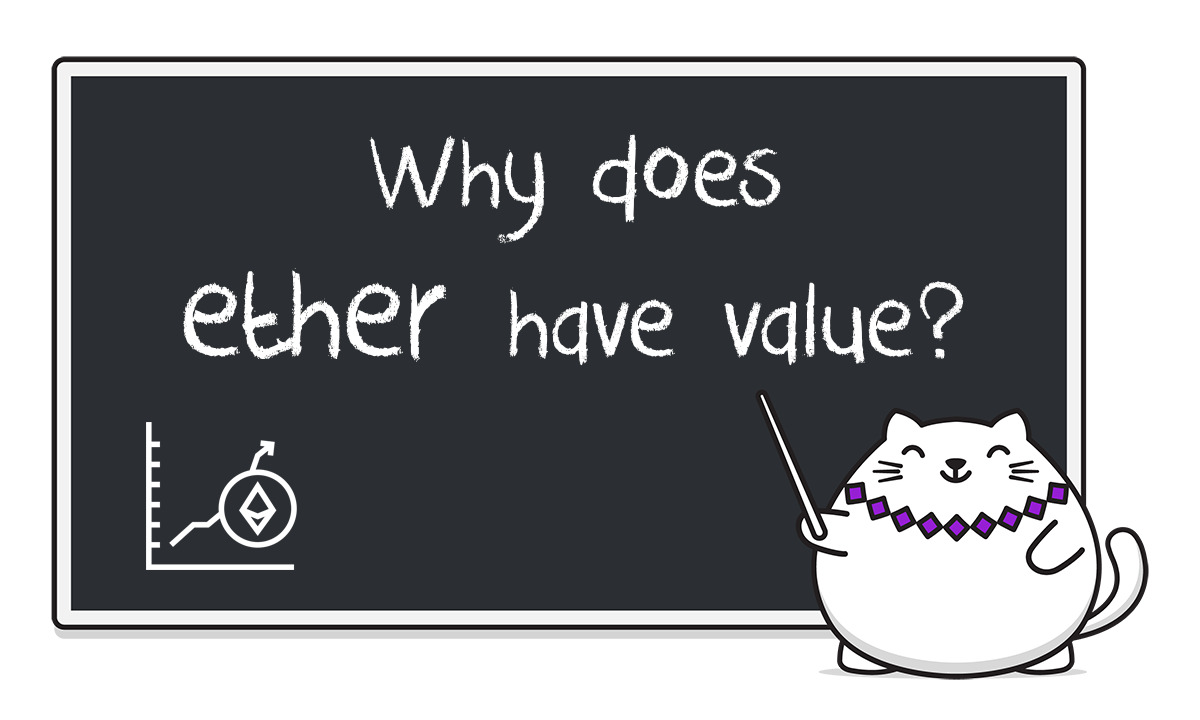Introduction
Welcome to the fascinating world of Ethereum and the debate surrounding its classification as a security. Ethereum, often referred to as a decentralized open-source blockchain platform, has gained significant traction and popularity since its inception in 2015. It has revolutionized not only the cryptocurrency market but also the entire technology landscape.
As Ethereum continues to flourish and attract attention, questions have arisen regarding its legal status. The crux of the matter lies in determining whether Ethereum should be classified as a security. This classification has far-reaching implications for investors, developers, and regulators alike. Understanding the arguments surrounding this debate is vital for anyone involved in the cryptocurrency ecosystem.
In this article, we will explore the complex issue of whether Ethereum should be considered a security and the potential implications of such a classification. We will delve into the Howey Test, a legal criterion used to determine if an asset qualifies as a security, and examine both sides of the argument.
The debate surrounding Ethereum’s classification as a security stems from the fact that many initial coin offerings (ICOs) in the past have been deemed securities by regulatory bodies. These ICOs, similar to Ethereum’s initial funding through a token sale, offered investors a form of ownership or participation in a venture. Consequently, this has led to concerns that Ethereum, due to its token sale and continued development, might fall into the same category.
It is important to note that this debate is not only significant for Ethereum itself but also for the broader cryptocurrency ecosystem. A determination that Ethereum is a security could set a precedent for other cryptocurrencies and tokens, potentially attracting heightened regulatory scrutiny and impacting investor confidence.
Throughout this article, we will examine the arguments for and against Ethereum being classified as a security, considering legal and regulatory factors. We will also explore the potential consequences if Ethereum is indeed deemed a security, discussing the impact on cryptocurrency markets, development, and regulatory compliance.
However, we must remember that the legal appraisal of Ethereum’s status as a security is an ongoing and complex matter. This article aims to serve as a guide, presenting various perspectives and exploring potential outcomes while showcasing the intricacies of this perplexing debate.
Overview of Ethereum
Ethereum, created by Vitalik Buterin in 2015, is a decentralized blockchain platform that enables the development of smart contracts and decentralized applications (DApps). Unlike Bitcoin, which primarily functions as a digital currency, Ethereum serves as a platform for executing programmable transactions.
At the heart of Ethereum is its native cryptocurrency, Ether (ETH). Ether serves as a means of value exchange on the network and fuels the execution of smart contracts. These contracts are self-executing agreements with the terms of the agreement directly written into code. Smart contracts facilitate secure and transparent interactions between parties without the need for intermediaries.
One of the key features that sets Ethereum apart from other blockchain platforms is its ability to support the development of decentralized applications. DApps leverage the power of Ethereum’s blockchain technology to create innovative solutions across various industries, including finance, supply chain management, and gaming.
Ethereum’s architecture consists of a global network of nodes, each running the Ethereum Virtual Machine (EVM), which executes smart contracts. These nodes are responsible for verifying and validating transactions, ensuring the integrity and security of the Ethereum network.
One of the most notable aspects of Ethereum is its scalability and flexibility. The platform allows developers to create their own tokens, known as ERC-20 tokens, which can be used for various purposes, such as crowdfunding or creating loyalty programs. This has spurred the growth of numerous projects and ICOs built on the Ethereum blockchain.
Another significant milestone for Ethereum is the upgrade to Ethereum 2.0, also known as Ethereum 2.0 Phase 0. This upgrade aims to address scalability issues by implementing a proof-of-stake consensus mechanism. This change will make Ethereum more energy-efficient and capable of processing significantly more transactions.
Furthermore, Ethereum’s community-driven approach and open-source nature have contributed to its widespread adoption and continuous development. The Ethereum community consists of developers, investors, and enthusiasts who actively contribute to the growth and improvement of the platform.
Ethereum’s impact extends beyond the realm of technology. It has spawned a vibrant ecosystem of decentralized finance (DeFi) applications, allowing for borrowing, lending, and decentralized trading without intermediaries. Additionally, Ethereum’s innovative applications have revolutionized concepts like non-fungible tokens (NFTs) and have gained attention from mainstream industries.
As Ethereum continues to evolve and push the boundaries of blockchain technology, its potential as a disruptor of traditional systems becomes increasingly apparent. However, the debate regarding its classification as a security adds a layer of complexity to its future prospects and regulatory compliance.
With this overview in mind, let us now dive into the question of whether Ethereum should be considered a security and explore the arguments surrounding this contentious issue.
What constitutes a security?
Before delving into the debate surrounding Ethereum’s classification as a security, it is important to understand the criteria that define what constitutes a security. In the realm of finance and investments, the term “security” typically refers to a tradable financial asset with monetary value.
The United States Securities and Exchange Commission (SEC) provides guidance on how to determine if an asset qualifies as a security. One of the most widely-used criteria is the “Howey Test,” which originated from a Supreme Court case in 1946 (SEC v. W.J. Howey Co.).
The Howey Test consists of four elements that must be met for an asset to be classified as a security:
- Investment of money: This refers to the provision of funds or assets to participate in a venture or enterprise.
- Common enterprise: The investors’ money must be pooled together into a common venture, with the expectation of profits generated by the efforts of others.
- Expectation of profits: Investors must anticipate receiving profits from their investment. These profits can be in the form of capital appreciation, dividends, or other economic benefits.
- Efforts of others: The profits of the investors must be generated primarily from the efforts of a promoter or a third party. In other words, investors are dependent on someone else’s expertise or managerial efforts for returns.
If an asset meets all four criteria of the Howey Test, it is likely to be classified as a security. However, it is essential to note that the application of the Howey Test is not limited to the United States, and other jurisdictions may have their own criteria and definitions for securities.
It is also worth mentioning that the concept of a security is not limited to traditional stocks and bonds. Regulatory bodies have expanded the definition to encompass various investment contracts, notes, fractional interests, and even certain types of cryptocurrencies.
Now that we understand the criteria for classifying an asset as a security, let us explore the arguments both for and against Ethereum being regarded as a security.
The Howey Test
The Howey Test, established by the Supreme Court in 1946, serves as a legal framework for determining whether a particular investment qualifies as a security. Named after the case SEC v. W.J. Howey Co., this test has become a key factor in evaluating whether Ethereum should be classified as a security.
Under the Howey Test, an asset is deemed a security if it meets the following four criteria:
- Investment of money: Ethereum’s initial funding through a token sale certainly involves the investment of money. Individuals and entities purchased Ether tokens (ETH) by contributing their funds, forming the basis for Ethereum’s development.
- Common enterprise: The pooling of funds from Ethereum’s initial token sale could be seen as a common enterprise. Investors collectively provided capital, and their involvement contributed to the growth and development of the Ethereum platform as a whole.
- Expectation of profits: Many investors who participated in Ethereum’s token sale anticipated obtaining profits from their investments. Given Ethereum’s growth and the potential increase in the value of Ether over time, the expectation of monetary gain was a prominent factor for many investors.
- Efforts of others: This aspect of the test is likely to be more contentious. The argument can be made that Ethereum’s profits are primarily derived from the collective efforts of the Ethereum Foundation, developers, and the wider community. As Ethereum continues to evolve and new features are implemented, investors may rely on the expertise and efforts of these parties for the success of their investment.
It is important to note that meeting all four criteria of the Howey Test does not automatically classify an asset as a security. Rather, it helps determine whether an investment falls within the SEC’s definition of a security.
The application of the Howey Test to Ethereum is a subject of debate. Proponents argue that Ethereum’s initial token sale and subsequent development fit the criteria of the test, suggesting that it should be classified as a security. On the other hand, those who oppose Ethereum being classified as a security argue that Ethereum’s decentralized nature and utility as a technology platform set it apart from traditional securities.
The Howey Test plays a crucial role in the discussion surrounding Ethereum’s classification, as it helps shape the legal and regulatory considerations associated with this groundbreaking blockchain platform. However, as with any legal framework, its interpretation and application in the context of evolving technologies like Ethereum continue to be subjects of ongoing analysis and debate.
Arguments for Ethereum being a security
There are several arguments put forth by proponents who believe that Ethereum should be classified as a security. These arguments are rooted in the application of the Howey Test and the characteristics of Ethereum’s initial token sale and subsequent development. Let’s explore some of the key arguments:
- Investment of money: Ethereum’s initial token sale involved individuals and entities investing their money in exchange for Ether (ETH) tokens. This financial investment aligns with the first criterion of the Howey Test, suggesting that Ethereum’s token sale can be regarded as a securities offering.
- Common enterprise: During the token sale, funds from investors were pooled together to collectively support the development and growth of the Ethereum platform. This pooling of funds could be seen as evidence of a common enterprise, satisfying another criterion of the Howey Test. Investors expect to benefit from the collective efforts of the Ethereum Foundation, developers, and the wider community.
- Expectation of profits: Many investors participated in Ethereum’s token sale with the anticipation of generating profits. As Ethereum gained popularity and its value increased over time, investors saw the potential for substantial returns on their investments. The expectation of profits aligns with the third element of the Howey Test.
- Efforts of others: Ethereum’s ongoing development and improvement are primarily driven by the efforts of the Ethereum Foundation, developers, and the broader community. Investors in Ethereum rely on these collective efforts for the success of their investment. This reliance on the expertise and actions of others satisfies the final criterion of the Howey Test.
Those in favor of Ethereum being classified as a security argue that these characteristics and the application of the Howey Test establish a strong case for Ethereum’s classification. They believe that this classification would provide investors with certain protections and regulatory oversight.
Furthermore, proponents argue that defining Ethereum as a security could lead to more clarity and certainty in the cryptocurrency market. Clear regulations and compliance requirements could instill trust among investors and encourage wider adoption of blockchain technology.
However, it is important to note that the categorization of Ethereum as a security is still a matter of debate and interpretation. Critics of this viewpoint argue that Ethereum’s decentralized nature, technological utility, and the absence of any central authority make it fundamentally different from traditional securities. They contend that classifying Ethereum as a security would stifle innovation and impede the growth of this transformative technology.
Considering these arguments in favor of Ethereum being deemed a security, it is evident that the classification of Ethereum carries significant legal and regulatory implications. The determination of whether Ethereum meets the criteria of a security will shape the future landscape of cryptocurrency regulation and investor protection.
Arguments against Ethereum being a security
While some argue for Ethereum to be classified as a security, there are compelling arguments against this view. Those who oppose Ethereum being labeled as a security highlight its unique characteristics and decentralized nature. Let’s explore some of the key arguments:
- Decentralization: Ethereum operates on a decentralized blockchain network, where no single entity has control over the platform. Unlike traditional securities, Ethereum’s value is not solely dependent on the efforts of a central authority or a specific group of individuals. Instead, its value is derived from the collective actions, consensus, and contributions of the Ethereum community.
- Technological utility: Ethereum functions primarily as a technology platform, enabling the development of decentralized applications (DApps) and the execution of smart contracts. The primary purpose of purchasing Ether (ETH), Ethereum’s native cryptocurrency, is to facilitate transactions and interactions within the Ethereum ecosystem. The utility of Ether within the platform differentiates it from traditional securities, which primarily serve as investments or ownership stakes in a company.
- Lack of dividend rights: Unlike traditional securities, holding Ether does not entitle the holder to dividend payments or a share of profits generated by the Ethereum network. Ethereum’s value is primarily driven by market demand, supply dynamics, and the overall growth and adoption of the platform. This deviation from the typical characteristics of securities challenges the argument for classifying Ethereum as such.
- Utility token classification: Ethereum is often considered a utility token rather than a security token. Utility tokens are primarily used to access or utilize a product or service, whereas security tokens represent traditional ownership or investment stakes. Ethereum’s primary function as a technology platform and the utility of Ether as a means of accessing DApps align more closely with the utility token classification.
Opponents of Ethereum being classified as a security argue that such classification would impede innovation, stifle development, and introduce unnecessary regulations. They claim that treating Ethereum as a security could subject it to stringent regulatory compliance requirements that are more suitable for traditional financial instruments. This, in turn, could limit the expansion of decentralized applications and hinder the potential benefits of blockchain technology.
Furthermore, critics argue that Ethereum’s decentralized nature and open-source development make it difficult to fit neatly within existing regulatory frameworks. They suggest that a new regulatory approach, tailored specifically to blockchain technology and cryptocurrencies, is needed to strike the right balance between investor protection and fostering innovation.
It is important to note that these arguments against Ethereum being classified as a security do not imply a disregard for investor protection. Rather, they reflect a belief that applying traditional securities regulations to a decentralized technology like Ethereum may not be the most appropriate approach.
As the debate continues, finding a balance between enabling innovation and providing safeguards for investors remains a key challenge for regulators and industry participants. The outcome of this ongoing discussion will shape the future regulatory landscape and potential development of blockchain technology beyond Ethereum.
Regulatory Implications if Ethereum is a Security
If Ethereum is classified as a security, it would have significant regulatory implications for the platform, developers, investors, and the broader cryptocurrency ecosystem.
Increased regulatory oversight: Designating Ethereum as a security would subject it to more stringent regulations, similar to those imposed on traditional securities. This could involve compliance with securities laws, registration requirements, and ongoing reporting obligations. Increased regulatory oversight may provide a level of investor protection but could also create additional compliance burdens for developers and increase regulatory uncertainty.
Impact on security token offerings (STOs): The classification of Ethereum as a security could influence the regulatory treatment of security token offerings (STOs) built on the Ethereum platform. STOs would likely face heightened scrutiny and be subject to more comprehensive regulations, potentially impacting the growth and accessibility of this fundraising method.
Token exchanges and trading platforms: Exchange platforms facilitating the trading of Ethereum and Ether may face regulatory implications if Ethereum is considered a security. They may need to comply with securities regulations, including licensing requirements, reporting obligations, and potentially stricter Know Your Customer (KYC) and Anti-Money Laundering (AML) procedures.
Investor protection: Classification as a security would afford certain legal protections to investors. It could require companies and token issuers to provide more detailed disclosure documents, such as prospectuses, to potential investors. This would aim to ensure transparency and enable investors to make informed decisions. However, it may also limit access for smaller investors due to the associated compliance costs.
Global regulatory coordination: The classification of Ethereum as a security would likely trigger discussions and coordination among regulatory bodies globally. Given Ethereum’s international reach, regulatory authorities would need to consider harmonizing their approaches to regulate securities issued through blockchain platforms effectively.
Evaluation of other cryptocurrencies: If Ethereum is deemed a security, it could set a precedent for the regulatory treatment of other cryptocurrencies and tokens. Regulators might scrutinize other blockchain projects and token issuances to determine whether they also qualify as securities, potentially leading to more consistent regulations in the cryptocurrency space.
Impact on market liquidity and innovation: Stricter regulations could impact the liquidity and trading volume of Ether and other tokens on exchanges. The increased compliance requirements may discourage some market participants, potentially limiting liquidity and hindering innovation within the cryptocurrency ecosystem.
It is important to note that the regulatory implications would vary based on the jurisdiction and the specific laws and regulations in place. Different countries might have different approaches to classifying and regulating digital assets. Therefore, a comprehensive global regulatory consensus may be necessary to provide clarity and facilitate the development of blockchain technology.
The regulatory landscape surrounding cryptocurrencies continues to evolve, and the determination of whether Ethereum is a security will influence the direction of future regulation. Striking the right balance between investor protection and fostering innovation will require a nuanced approach, considering the unique characteristics and potential benefits of blockchain technology.
Impact on the Cryptocurrency Ecosystem
The classification of Ethereum as a security would have a profound impact on the broader cryptocurrency ecosystem, influencing market dynamics, investor sentiment, and regulatory frameworks. Let’s examine some of the potential implications:
Market volatility: The classification of Ethereum as a security could trigger market volatility, as investors and market participants reassess their positions and strategies. Uncertainty surrounding regulatory implications and potential compliance burdens may lead to increased price volatility, particularly in the short term.
Investor confidence and institutional participation: The regulatory classification of Ethereum as a security could provide a level of reassurance to institutional investors who value clearer regulatory frameworks. Institutional participation in the cryptocurrency market could increase, bringing additional liquidity and stability to the ecosystem. However, regulatory burdens and potential limitations on retail investor access could impact overall investor confidence.
Blockchain innovation: Stricter regulations and a security classification for Ethereum might stifle innovation within the blockchain industry. Startups and developers may face additional compliance costs and regulatory barriers, potentially impeding the creation of new decentralized applications (DApps) and the advancement of blockchain technology. This could slow down the pace of innovation and limit the potential benefits that blockchain can bring to various industries.
Regulatory clarity: The classification of Ethereum as a security could provide regulatory clarity not only for Ethereum but also for other cryptocurrencies and tokens. It could establish a precedent and framework for determining the regulatory status of similar projects. Clearer guidelines and consistent regulations could enhance investor protection, reduce regulatory arbitrage, and foster wider adoption of digital assets.
Shift in project fundraising: If Ethereum is deemed a security, it may change the landscape of project fundraising within the cryptocurrency ecosystem. Security token offerings (STOs) could become more prevalent, relying on a more regulated and compliant framework. This shift may provide investors with more protection but could also introduce higher barriers to entry for smaller projects and investors.
Global regulatory harmonization: The classification of Ethereum as a security would likely spur discussions among global regulatory bodies to harmonize their approaches to blockchain regulation. This coordination could help establish consistent standards, promote cross-border transactions, and facilitate the growth of the global cryptocurrency ecosystem.
Evolving legal frameworks: The classification of Ethereum as a security could prompt lawmakers and regulatory agencies to reassess existing legal frameworks and introduce new regulations specifically tailored to blockchain and cryptocurrencies. This process could lead to a more comprehensive and coherent regulatory environment that balances investor protections with technological innovation.
It is essential to consider that the impact on the cryptocurrency ecosystem would depend on how Ethereum’s security classification is implemented and enforced. Striking a balance between regulatory oversight, investor protection, and fostering innovation within the blockchain industry is crucial for sustainable growth and the realization of the transformative potential of decentralized technologies.
Potential Outcomes and Future Developments
The classification of Ethereum as a security or its determination as a different type of asset will shape the future landscape of blockchain technology, the cryptocurrency market, and regulation. While the outcome remains uncertain, several potential outcomes and future developments can be envisaged:
Regulatory adjustments: If Ethereum is deemed a security, regulators may need to adapt existing securities laws and regulations to accommodate the unique characteristics of blockchain technology. Regulators could introduce new guidelines and frameworks for securities issued on blockchain platforms, striking a balance between investor protection and fostering innovation.
Legal precedents: The classification of Ethereum could establish legal precedents that would influence the regulatory treatment of other cryptocurrencies and blockchain projects. The outcome of this case could serve as a guide for future assessments of tokens and their regulatory categorization, contributing to greater clarity and consistency in the industry.
Shift towards decentralized governance: If Ethereum receives a security classification, it may prompt the Ethereum community to seek more decentralized governance structures. This could involve developing mechanisms for community-led decision-making and reducing dependence on centralized entities, aligning with the ethos of decentralization that underpins blockchain technology.
Innovation in compliant fundraising: A stricter regulatory environment could give rise to innovative methods of conducting compliant fundraisings within the cryptocurrency space. Entrepreneurs and developers may explore alternative models, such as security token offerings (STOs), that comply with securities regulations while still harnessing the efficiency and inclusivity of blockchain technology.
Technology advancements: Regardless of Ethereum’s classification, the development of blockchain technology is expected to continue at a rapid pace. Ethereum’s transition to Ethereum 2.0, with the implementation of proof-of-stake and scalability improvements, along with advancements in layer 2 solutions, could enhance its capabilities and utility as a technology platform.
Evolution of regulatory frameworks: The classification of Ethereum may lead to the evolution of regulatory frameworks for cryptocurrencies globally. Regulators will likely face the challenge of keeping up with the fast-paced nature of the industry, updating regulations to strike an appropriate balance between investor protection, innovation, and market development.
Greater investor protection: A securities classification for Ethereum could provide additional protections and safeguards for investors participating in token sales and investing in the cryptocurrency market. Enhanced disclosure requirements and regulatory oversight could improve transparency and reduce the risk of fraudulent activities, ultimately fostering investor trust and confidence.
Standardization and interoperability: As regulations become clearer, industry participants may work towards standardizing practices and promoting interoperability between different blockchain platforms. This could enable seamless integration and transferability of tokens across different networks, benefiting both users and the broader ecosystem.
As the debate over Ethereum’s classification as a security unfolds, it is important to monitor how regulators, developers, and market participants respond to potential outcomes. The decisions made regarding Ethereum will influence the maturation of the cryptocurrency ecosystem, the regulatory environment, and the future development of blockchain technology.
Conclusion
The debate surrounding whether Ethereum should be classified as a security is a complex and multifaceted issue that has far-reaching implications for the cryptocurrency ecosystem. While there are arguments on both sides of the debate, it is important to consider the potential outcomes and future developments that could arise from Ethereum’s classification.
If Ethereum is classified as a security, it would subject the platform to increased regulatory oversight, potentially impacting market dynamics and investor confidence. It could also lead to the creation of new regulatory frameworks and legal precedents that shape the treatment of other cryptocurrencies and blockchain projects.
However, there are arguments against Ethereum being classified as a security, emphasizing its decentralized nature, technological utility, and differentiation from traditional securities. Critics contend that strict regulations could stifle innovation and hinder the potential benefits that blockchain technology can bring to various industries.
Regardless of the classification outcome, the cryptocurrency ecosystem will continue to evolve and advance. Technological advancements, such as Ethereum’s transition to Ethereum 2.0, are expected to enhance the capabilities and scalability of the platform. Additionally, regulatory frameworks will likely undergo further iterations to strike the right balance between investor protection and fostering innovation.
As the industry progresses, the importance of global regulatory coordination and the development of tailored regulations for blockchain technology cannot be overstated. Cooperation among regulatory bodies will be essential in creating consistent standards and fostering the growth of the cryptocurrency ecosystem.
Ultimately, the classification of Ethereum as a security or any other asset type will shape the future of blockchain technology, regulation, and investor participation. Striking the right balance between regulatory oversight and the benefits of decentralized technology will be crucial in fostering innovation, protecting investors, and realizing the transformative potential of blockchain in various industries.
As the discussions and debates continue, it is essential for stakeholders to collaborate, adapt, and stay informed about the evolving regulatory landscape and the advancements within the cryptocurrency ecosystem. This will enable them to navigate through the challenges and opportunities that lie ahead and contribute to the responsible and sustainable growth of blockchain technology.

























